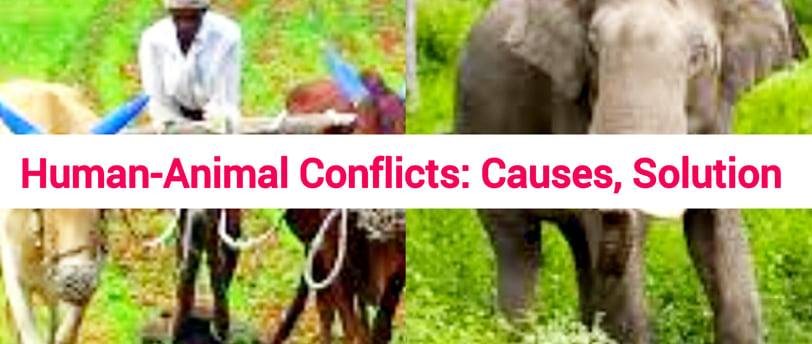Understanding Human Animal Conflict: Causes & Solutions
Explore the reasons for human animal conflict in India, including examples and legal frameworks. Discover effective strategies to tackle these conflicts while promoting environmental protection and animal wellbeing.
TOP ARTICLEENVIRONMENT ISSUES
Won India Editor
3/17/20252 min read


Introduction to Human and Animal Conflict
The relationship between human beings and animals is a complex one, often marked by conflict. In recent years, this phenomenon has become especially pronounced in India, where the encroachment of urban areas into wildlife habitats has led to an increase in confrontations. The consequences are dire, affecting both human and animal wellbeing.
Recent Examples from India
Several incidents in India highlight the seriousness of human-animal conflict. For instance, reports have emerged from regions like Uttarakhand and Maharashtra, where elephants have raided agricultural fields, causing significant loss to farmers. In another incident, tigers have attacked livestock and occasionally humans, resulting in tragic fatalities. Such examples underline the need for a better understanding of the root causes behind these conflicts.
READ ALSO: AI and Human Rights: Current Impacts and Future Prospects
Understanding the Causes
The conflict often stems from a multitude of reasons. Due to rapid urbanization and agricultural expansion, wild animals are losing their natural habitats. Consequently, as they search for food and shelter, they venture into human settlements, leading to confrontations. Furthermore, retaliatory actions from humans against perceived threats from animals can exacerbate the situation. The destruction of crops by wildlife can lead to significant economic losses, prompting farmers to take drastic measures against these animals.
READ ALSO: Kalpana Chawla: Biography and Legacy
Legal Framework in India
India has laws in place aimed at protecting wildlife, such as the Wildlife Protection Act of 1972. This legislation is designed to minimize conflict and ensure the conservation of endangered species. However, implementation remains a challenge, as communities affected by wildlife often feel that their grievances are not adequately addressed by authorities. Understanding the legal frameworks can help in developing better strategies to mitigate conflicts.
Environmental Protection Laws in India
India has established several key legislations to safeguard its environment and forests.
The Indian Forest Act, 1927 focuses on forest preservation, while the Forest (Conservation) Act, 1980 aims to control deforestation. The Environment (Protection) Act, 1986 sets comprehensive environmental regulations, and the Biological Diversity Act, 2002 promotes biodiversity conservation.
READ ALSO: Tim Robinson: Comedian, Actor & Upcoming Movies
Addressing the Conflict: Solutions
To address human-animal conflict effectively, a multifaceted approach is required:
Community Engagement: Involve local communities in conservation efforts, promoting awareness regarding the ecological importance of wildlife.
Buffer Zones: Establish buffer zones between agricultural land and wildlife habitats to reduce encounters.
Compensation Mechanisms: Implement compensation schemes for farmers who suffer losses due to wildlife, which can help mitigate retaliatory actions against animals.
Wildlife Protection Training: Train wildlife officials and local police to respond effectively to human-animal conflicts, ensuring a humane and lawful approach.
Awareness Campaigns: Conduct awareness campaigns to educate the public on coexistence with wildlife, reducing fear and misinformation.
Conclusion
The issue of human-animal conflict is a serious matter that requires urgent attention in India. By understanding the underlying causes and implementing effective strategies, it is possible to reduce such conflicts, ensuring the safety and wellbeing of both humans and animals. The time has come to foster a more harmonious coexistence that respects the rights and needs of all species.
People also search
Get in touch
Share with visitors how they can contact you and encourage them to ask any questions they may have.


About me
Hello! I’m Asish, the author of this blog, where I share my passion for reading and digital content writing. As a book lover, I enjoy exploring new stories and ideas. I also love traveling and indulging in delicious food experiences.
Experience
Position title
As a senior content writer with years of experience, I hold the responsibility of creating engaging and high-quality content for this site.


Subscribe to our newsletter
Enjoy exclusive special deals available only to our subscribers.
Connect
Connect
Discover
info@wonindia.com
+91 8617698056
© 2024 wonindia.com All rights reserved.


